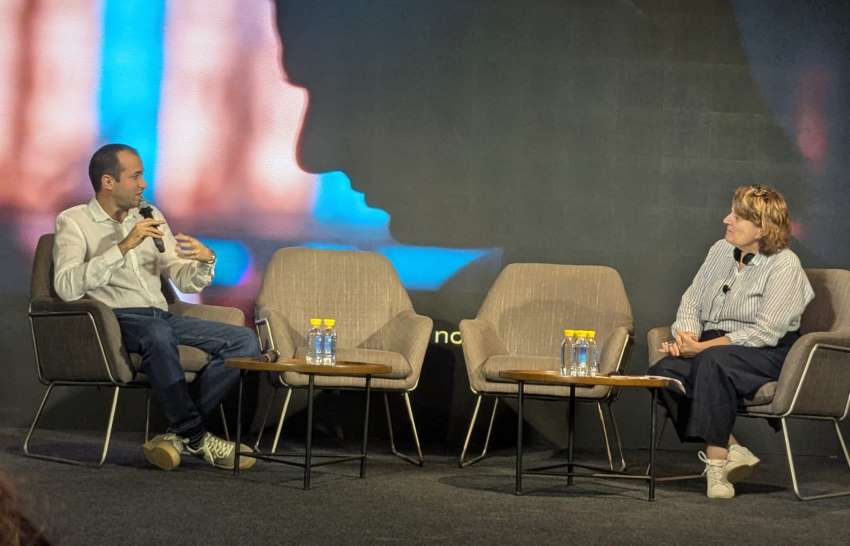FW
"Russian clothing industry, once highly dependent on imports has transformed dramatically over the last few years. The weak ruble has made imported clothes, shoes and accessories less affordable for consumers, giving more space for local manufacturers, especially in the lower priced segment. Russian apparel brands have adopted anti-crisis strategies by reducing prices or relocating manufacturing facilities from China and Southeast Asian countries to Russia, as labour cost has significantly fallen in the country. "

Russian clothing industry, once highly dependent on imports has transformed dramatically over the last few years. The weak ruble has made imported clothes, shoes and accessories less affordable for consumers, giving more space for local manufacturers, especially in the lower priced segment. Russian apparel brands have adopted anti-crisis strategies by reducing prices or relocating manufacturing facilities from China and Southeast Asian countries to Russia, as labour cost has significantly fallen in the country.
Although the focus has shifted, some of the largest players have continued their long-term plans for global expansion. As Western markets pose challenges due to the economic and political tensions, Russian brands have turned to Asia.
Asian an emerging market

Countries like China, Bangladesh, India, Pakistan, Sri Lanka and Vietnam are considered global apparel manufacturing hubs. However, many of these have emerged as fast growing consumer markets, offering huge opportunities for foreign apparel brands. The 2015-16 Outlook for the Retail and Consumer Products Sector in Asia report by PricewaterhouseCoopers suggests that by 2018, consumer expenditure on clothing and footwear in Asia is expected to reach almost $920 billion compared to an estimated $625 billion in 2014. The Chinese market will account for almost one-third of regional demand for clothing followed by Hong Kong, Japan, South Korea, Indonesia, India and other countries.
Several Russian apparel brands have set up shop in Asia over the last few years. Sportmaster, Russia’s largest retailer of sportswear and fitness gear started its Asia expansion several years back. While announcing plans back in 2013, Sergey Agibalov, Sportmaster Group’s Business Manager observed that the company had considered China as a potential market due to its geographic proximity to Siberia and the Russian Far East, and also because the company had been placing orders at Chinese factories. The company managed to open 12 stores in China under the Sportmaster brand and 19 stores under the O’STIN brand (casual wear of middle-level price category), despite a sharp decline in the home market in 2014 and 2015.
Meanwhile, Russia’s Carlo Pazolini Group, which has been manufacturing luxury shoes and accessories since 1991, shifted up to 70 per cent of its manufacturing from Europe to China. It also operates own boutique in Beijing and has plans to open more stores there.
India expansion plans
In January 2016, Vladimir Yevtushenkov, Chairman of AFK Sistema said the company’s fashion retail asset, Concept Group, launched a partnership with India’s Tata Group to sell Russian-made clothes through Tata’s e-commerce venture, TataCliq. The platform was officially launched in India in the end of March, and the Russian-made Infinity Lingerie brand is already there. .
Sistema says, the conglomerate does not have a clear strategy for Asian expansion, although there is a definite interest in these markets. The launch of Concept Group’s partnership in India is considered a pilot project, and based on its success AFK would decide on further expansion. Sistema acquired 40 per cent stake in Concept Group in 2014.
Meanwhile, a foray into the Indian market turned successful for another Russian apparel brand, SELA. The company partnered with two e-commerce platforms, Amazon and Myntra, for selling its collections on-line. As Said Julia Zefirova, Head Corporate Communications at SELA says India is a fast growing market and attracts many retailers, like China 10 years ago. Their printed T-shirts with Russian themes are popular in India.
Uncertain advantage
Timur Nigmatullin from FINAM believes the current Asian expansion is the beginning of a trend predicted by experts a long time ago. More Russian companies will enter Asian markets in the future, their main advantage in these markets would be established relations with local manufacturers and good corporate management practices.
Anna Lebsack-Kleimans, Chief Executive of Fashion Consulting Group doubts whether Russian clothing brands have any significant advantages in Asian markets as local brands have loyal customers. She adds Russian brands can win over Asian consumers by offering outstanding concepts, original ‘European’ designs, or a unique retail format.
Russian designer Gosha Rubchinsky is probably one such example. Spotted by Comme des Garçons a few years ago, Rubchinsky’s name and story went viral from Moscow and London to Milan and Paris to Tokyo and Seoul. Gosha Rubchinskiy street wear, which is inspired by 1990s Russia subcultures, is also available in various retail outlets in Indonesia, Philippines, Hong Kong, Singapore and Taiwan.
According to an official with Iran Chamber of Commerce, Industries, Mines and Agriculture, the removal of textile products from the list of items covered by Iran-Turkey Preferential Trade Agreement (PTA) was an essential step.
With competition from cheap Turkish imports, the apparel industry was bound to face a serious crisis, said the official, Ahmad Kimiaie-Asadid. Last month, ISNA reported that there is no mention of textile products on the list of Iran-Turkey PTA in the book of Imports/Exports Rules for the current Iranian year (March 2016-17). This means clothing imports from the neighboring country no longer enjoy lower import tariffs.
Mehdi Raeeszadeh of Iran Textile Association confirmed the news and said the move is expected to bring about a positive change in the domestic textile industry. According to the Anti-Smuggling Central Taskforce, some $2.7 billion worth of clothing are smuggled into Iran every year. The extensive land border with Turkey has enabled smugglers to easily cross to and fro carrying large amounts of goods. The retailers of smuggled clothes, including many shop owners in Tehran and border provinces such as Kurdistan and West Azarbaijan, frequently travel to Turkey and get their orders transported to depots on the Turkish side of the border, after which local smugglers and villagers carry the goods into mainland Iran.
An international direct-investment information bulletin from the Turkish economy ministry has confirmed Chinese investors continue to increase their foothold in Turkey’s textile industry. Between January and December 2015, 60 new foreign companies invested $429m in Turkey’s textile and clothing manufacturers – up 30 per cent compared to the previous year the figures suggest.
Analysis of the data by Turkish language newspapers show, Chinese investors contributed a significant portion of this money, attracted by the Turkish textile sector’s product quality and fast delivery. Looking at all economic sectors, Chinese investment in Turkey exceeded $1.6bn in 2015.
According to Huang Songfeng, Consulate General of China in Istanbul, so far, more than 60 medium-and-large sized Chinese enterprises have opened a representative office in Istanbul. Chinese investment projects in Turkey and central Asia have also been given support from the government in Beijing through the China’s One Belt, One Road development strategy. He added that the decision of the Industrial and Commercial Bank of China (ICBC) to buy majority shares in Turkey's Tekstilbank AS was a good example. It acquired a 76 per cent stake in Tekstilbank in April 2014 for $316 million.
A recent survey has found most of the 1,163 member factories of the Bangladesh Garment Manufacturers and Exporters Association are either closed or are non-existent. Yet these RMG factories still enjoy BGMEA membership thanks to ballot politics.
According to a number of BGMEA members, the non-existent factories maintain their membership by paying annual subscription fees to the trade body. The members who take part in elections to the executive body of the association often pay the money for the owners of the closed and non-existent factories to increase their vote base, they said.
The BGMEA conducted the survey to find out the real status of its member factories. According to a BGMEA official involved with the process, most of the 1,163 closed factories have no existence and they have no chance of restarting business but some of the units closed operations in recent years due to noncompliance and shortage of orders and they are trying to resume operations.
According to some BGMEA members, a good number of factories disappeared from the sector due to the impact of quota phase-out in the RMG sector in 2005 but most of the factories maintained membership of the trade body.
The Punjab region of Pakistan wants farmer-friendly intervention from the government in the form of an indicative price and the procurement of two million bales to address the issue of low price. It is feared that even a 50 per cent sowing target may not be achieved if some such intervention doesn’t take place.
Cotton is Pakistan’s main foreign exchange earner and is the life line for the agrarian economy of Pakistan as it feeds the vital raw material for the entire value addition industry of cotton. But cotton farmers across the country have suffered huge losses in the previous two consecutive years. Last year, due to untimely rains and the pest attacks, farmers did not even recover half of the price of their cost of production. Given this scenario, farmers were generally reluctant to sow cotton during the current crop season.
Measures were undertaken to procure cotton during the crop year 2014-15 though this was not a well planned and timely intervention. Procurement began tardily and very poor quality lint was bought from ginning factories. This lint is still lying in warehouses, and it has become almost impossible to sell the stock at reasonable prices, although the middlemen are getting fair prices, by selling the same quality of lint at higher rates.
A denim expo will be held in Vietnam, June 16 to 17, 2016. The show is aimed at bringing reputed denim producers, brands, retailers and supply chain partners together at a single platform. At least 34 companies from India, Pakistan, Bangladesh, China, Italy, Brazil, Vietnam, Indonesia and Turkey are expected to participate.
The expo is being organized by Indian Denimsandjeans.com, a website dedicated to the world denim industry since 2007. It is the first ever denim sportswear show in Vietnam.
Vietnam is a growing apparel exporting country. It presently ranks the fourth largest exporter of apparel and clothing after China, Bangladesh and Hong Kong and it has around 4,000 garment factories employing about 2.5 million workers.
The Vietnamese apparel industry has been emerging as the next major sourcing destination for many buyers, especially from the US market. Denim is a growing segment of apparel sourced from Vietnam and is likely to witness significant growth in the coming years.
Bangladeshi denim makers are planning to expand their market in Vietnam through participating in the denim show. At least four Bangladeshi denim industries are taking preparations to participate. The denim groups are Amber Denim, Square Denims, Aaron Denim and Shasha Denims.
Businesses in Vietnam prefer the free trade agreement with the EU than the Trans Pacific Partnership. They feel the EU agreement can bring them bigger benefits and gives more favorable conditions in government procurement as it allows procurement deals in localities as well.
Since the EU offers attractive schemes for Vietnam, in return, Vietnam is also willing to give preference to the EU. Under the free trade agreement, the EU will remove 85 per cent of the tariffs imposed on Vietnamese goods as soon as the agreement takes effect. The EU has offered attractive provisions to Vietnam regarding many production fields. For example, it agreed to remove all import tariffs on Vietnam’s textile and garment products within seven years. The tariffs on footwear and shoes will also be completely removed by the EU.
The EU has also promised strong support to Vietnamese farm produce to approach the EU market. Vietnam’s fish products, for example, will be freed of tariffs within three years. Moreover unlike TPP, EU does not set the yarn-forward principle for Vietnam’s garment exports. Instead, the fabric-forward principle is applied. The EU agreement and the TPP are expected to take effect in one or two years.
Australian International Sourcing Expo will be held from November 14 to 16, 2017. Designed to connect New Zealand and Australian trade buyers with a wide range of suppliers and manufacturers from around the globe, the expo will be attended by more than 500 exhibitors displaying their wares.
With a focus on apparel, accessories and textiles, exhibitors representing key sourcing hot spots such as China, India, Bangladesh, and Hong Kong will attend the expo and showcase their respective industry’s appeal to foreign business and investment. The expo provides an organised way for international sourcing, learning and networking for a wide range of industry professionals from around the world. It is essential for anyone in the apparel, accessories and textiles industry.
It is not only an opportunity to meet some of the world’s most respected industry professionals but a chance to discuss larger issues facing the industry today, such as global trends and logistical challenges. The show also provides the opportunity for visitors to collect valuable market insights and business tips as well as comparing production capability and costs, diversifying their supply chain, and sourcing new business.
The event will feature the latest in men’s wear, women’s wear and children’s wear on display, along with footwear, accessories, home textiles, jewelry and travel goods.
ITM Texpo Eurasia took place in Turkey from June 1 to 4, 2016. The exhibition covered areas like yarns, knitting, weaving, dyeing, printing, finishing and hosiery machines, sub-industries and chemicals. More than 1,000 textile technology producers presented their latest models in operation.
Textile machinery specialists presented their innovations. Shima Seiki, a leading computerized knitting machine manufacturer, featured its flagship Mach 2XS whole garment knitting machine with original slide needle on four needle beds and spring-loaded moveable sinkers as well as the compact SW G091 N2 for producing smaller whole garment items and accessories.
Italian hosiery knitting machine builder Busi Giovanni presented the company’s J-Terry and Busi medical terry pantyhose single cylinder sock machines. Groz-Beckert, a leading provider of industrial machine needles, precision parts and fine tools, showcased its circular knit exhibit, a circular knitting machine replica made of acrylic glass that visualized 14 different knitting technologies from gauge E10 to E50.
Monforts presented a wide range of advanced innovations and developments. Karl Mayer exhibited its new HKS 4-M EL tricot machine and the Size Box VSB innovative sizing technology.
ITM Texpo saw the sector’s leading textile technology representatives and welcomed 49,730 visitors. It provided a great opportunity to foreign and local participants to present their new technologies.
Major users of cotton the world over are failing to source sustainable cotton on a large scale. Despite the significant progress made by a few leading companies, there is significant room for improvement in sourcing and reporting of sustainable cotton. The last few years have seen an increase in attention for sustainable apparel from both consumers and market, which has created momentum for initiatives focused on promoting the sustainable production of cotton. Under right conditions, organic cotton production, regarded as the gold standard for sustainable cotton production, delivers impressive benefits to the farmer, the environment, and the industry as a whole.
Organic Cotton Accelerator (OCA) is a new collaborative platform which strives to address the issues the sector is facing, by coordinating actions that enable improvements in the organic cotton farmer’s business case, appropriate integrity, and increased security of supply.
Organic Cotton Accelerator is committed to building a prosperous organic cotton sector which benefits everyone—from farmer to consumer. Its aim is to build a fair, robust organic cotton market with appropriate integrity at every relevant level, while growing supply and demand. This momentum for sustainable apparel has motivated several sustainability front-runners in apparel to join forces with OCA.












